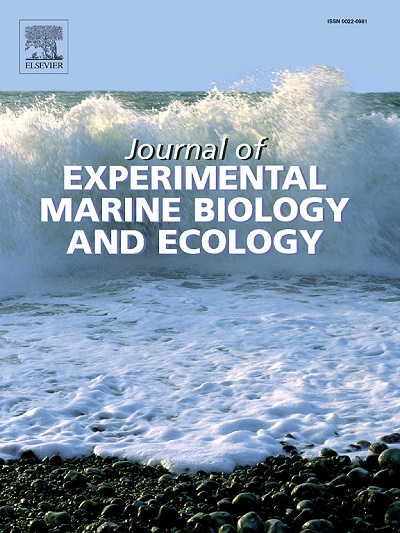Screening of predatory fish species for larvae of Acanthaster solaris and quantitative analysis techniques of environmental DNA
IF 1.8
3区 生物学
Q3 ECOLOGY
Journal of Experimental Marine Biology and Ecology
Pub Date : 2025-03-20
DOI:10.1016/j.jembe.2025.152093
引用次数: 0
Abstract
In the context of ongoing outbreaks of the crown-of-thorns starfish, the outbreak of the South China Sea's crown-of-thorns starfish (Acanthaster solaris) has severely threatened coral reef ecosystems, highlighting the urgent need for research on related control and eradication technologies. Biological control offers environmental friendliness and long-term effectiveness, making research on predator fish species crucial for managing the crown-of-thorns starfish outbreaks. This study investigates the feeding effects of seven common coral reef fish species in the South China Sea on crown-of-thorns starfish larvae, aiming to identify suitable predator fish species for South China Sea reefs. Additionally, the study develops and validates eDNA quantitative detection technology for the most effective predator, providing technical support and data for subsequent stock enhancement, release effectiveness evaluation, and fishery management. The results indicate that Pomacentrus coelestis significantly outperforms other species in terms of both feeding amount and feeding rate on brachiolaria, making it the most optimal predator identified in this study with a consumption rate of 403 larvae/day. There is a significant positive correlation between the density of the P. coelestis and eDNA concentration, with eDNA concentration stabilizing after 96 h of cultivation. The linear function (eDNA concentration = 267,120,000 density − 234,320,000) shows a good fit (R2 = 0.985), making it generally effective for assessing the resource levels of P. coelestis in stable water environments.
求助全文
约1分钟内获得全文
求助全文
来源期刊
CiteScore
4.30
自引率
0.00%
发文量
98
审稿时长
14 weeks
期刊介绍:
The Journal of Experimental Marine Biology and Ecology provides a forum for experimental ecological research on marine organisms in relation to their environment. Topic areas include studies that focus on biochemistry, physiology, behavior, genetics, and ecological theory. The main emphasis of the Journal lies in hypothesis driven experimental work, both from the laboratory and the field. Natural experiments or descriptive studies that elucidate fundamental ecological processes are welcome. Submissions should have a broad ecological framework beyond the specific study organism or geographic region.
Short communications that highlight emerging issues and exciting discoveries within five printed pages will receive a rapid turnaround. Papers describing important new analytical, computational, experimental and theoretical techniques and methods are encouraged and will be highlighted as Methodological Advances. We welcome proposals for Review Papers synthesizing a specific field within marine ecology. Finally, the journal aims to publish Special Issues at regular intervals synthesizing a particular field of marine science. All printed papers undergo a peer review process before being accepted and will receive a first decision within three months.

 求助内容:
求助内容: 应助结果提醒方式:
应助结果提醒方式:


